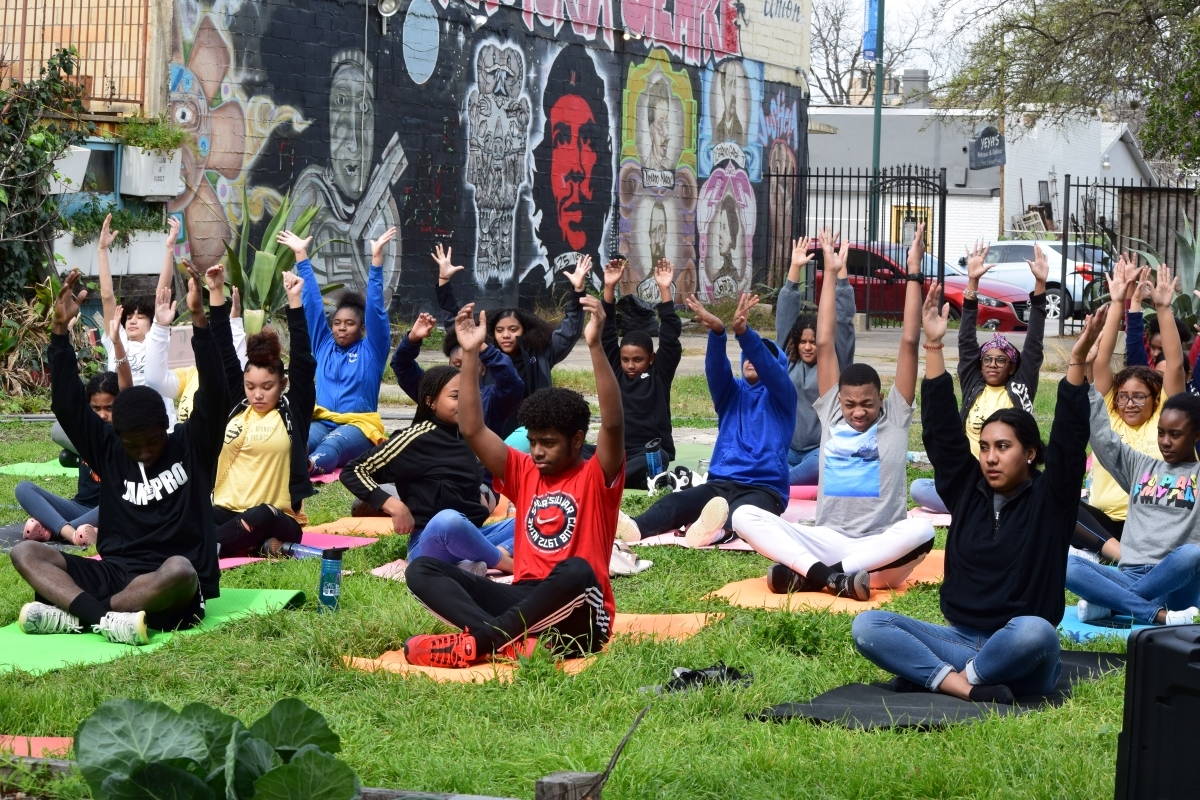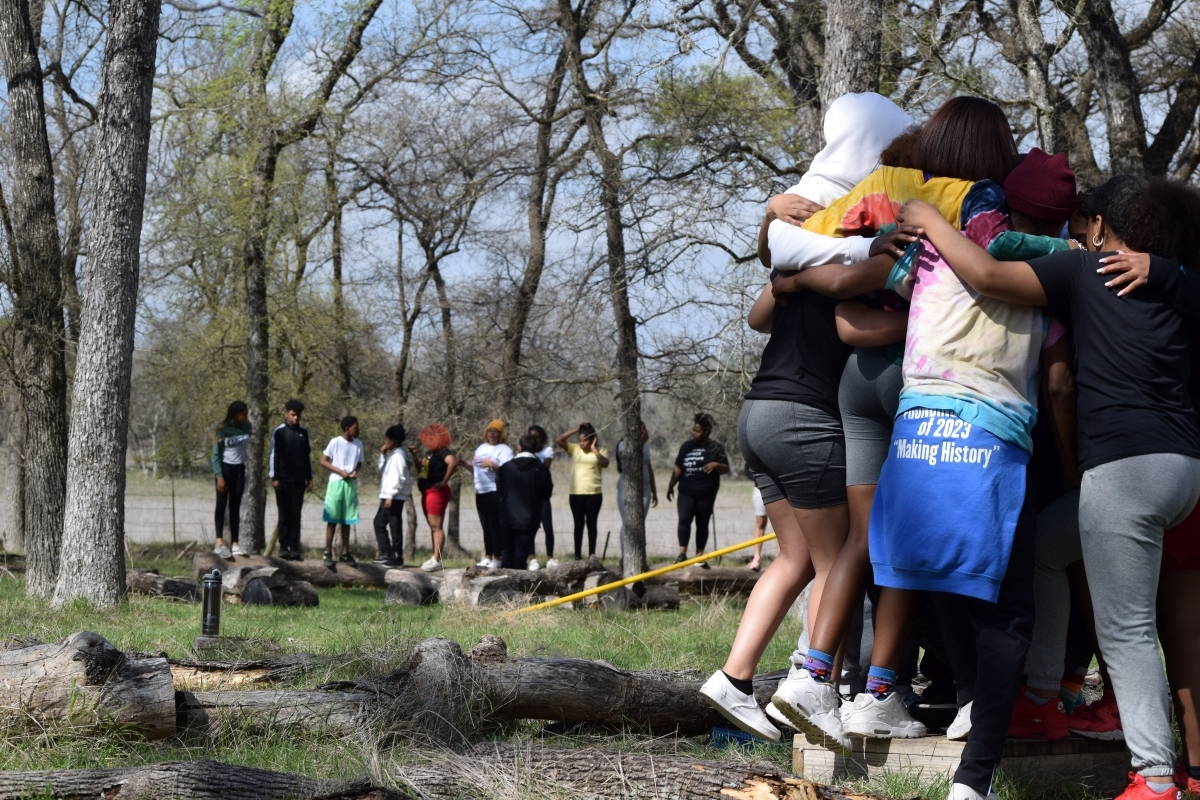Be Like Water, An Abolitionist Relationality (Part II)

“Be Like Water, An Abolitionist Relationality” is published in two parts. Part II (below) is the sixth piece in the 2020 Visions: Imagining (Post-) COVID Worlds series, which aims to reflect on the uneven impacts of the “pandemic year” and to consider new futures that might be made possible in its wake. You can find Part I here. Series editors: Weishun Lu, Juniper Lewis, Richelle Wilson, and Addie Hopes.
What does abolition look like, visually, at the level of everyday relationality? By this I mean, what does abolition look like in practice, in terms of how we relate to each other, ourselves, and to the more-than-human world? If we had more abolition visuals could we then imagine a world where we are practicing healing, restorative, and transformative justice instead of criminalizing, isolating, and disappearing people?
Macarena Gómez-Barris describes “the enclosure, the plantation, the ship, and the reservation” as “quintessential colonial spaces where power was consolidated through visuals regimes.” The prison is another important colonial space. Kelley Lytle Hernández’s book City of Inmates provides a historical analysis of mass incarceration in Los Angeles, underscoring how incarceration was and continues to be used as a technology of the U.S. settler-colonial project, eliminating Native peoples to take land. Settlers invade with intent to stay and reproduce while removing, dominating, and ultimately replacing Indigenous populations. Hernández defines the function of incarceration as elimination, with the goal of establishing, defending, and reproducing a settler society. Colonialism is a system based on racialized and gendered domination, and incarceration is one of the many technologies of this system. The prison is an extension of the enclosure, the ship, the plantation, and the reservation.
I want to see abolition visuals that represent life and regeneration.
In a recent conversation at University of California, Santa Cruz, Angela Y. Davis and Gina Dent discussed how visuals of the prison are everywhere and function to normalize the prison system. Visuals are powerful because they can inform what we think is possible in the world. They can limit and inspire our imaginations. Visuals shape our realities. The normalization of the prison system through visuals is an important area of our struggle because it is a large part of the reason why many people cannot imagine a world without prisons or alternatives to incarceration.
A key part of our abolition movement has to include creating abolition visuals. I am not talking about visuals that are only concerned with directly countering or engaging with prisons (though those have value). Instead, I’m interested in abolition visuals that do not even make us think about the prison at all. I want to see more abolition visuals that represent life and regeneration.
In 2018, I decided to build the Charles Roundtree Bloom Project, an outdoor healing justice program for youth impacted by incarceration in Yanaguana/San Antonio, Texas. The Bloom Project provides healing-centered outdoor experiences and culturally relevant, place-based, critical environmental education to help these youth envision new possibilities for their lives, for their communities, and for our planet. I named the Bloom Project in honor of my younger cousin, Charles “Chop” Roundtree, Jr., who was shot and killed by a San Antonio police officer in 2018. He was only 18, a kid who embodied joy and play, and never got the opportunity to bloom to his full potential.

The Bloom Project logo honors Chop’s life. The logo is based on an image of Chop’s face, partially transformed into dandelions. adrienne maree brown writes that “a dandelion is a community of healers waiting to spread.” brown explains,
The dandelion flower head can change into a white, globular seed head overnight. Each seed has a tiny parachute that allows it to spread far and wide in the wind. The entire plant has medicinal properties. Dandelions are often mistakenly identified as weeds, aggressively removed, but are hard to uproot; the top is pulled but the long taproot remains. Resilience. Resistance. Regeneration. Decentralization.
The wind carries the dandelion seeds of Chop’s legacy, scattering it around where his spirit will bloom in new forms.
The theme of the Bloom Project’s 2021 curriculum is migration. We have been and will continue learning about the social and environmental issues related to migration, the connections between the U.S. immigration system and the prison industrial complex, and mobilizations for justice. We will work with our youth to imagine and build a world without borders, walls, and cages—perhaps, a world of bridges. Below I share some abolition visuals through photos captured during Bloom Project sessions in 2019 and 2020, and through poetry inspired by moments where I have experienced freedom.
Hiking While Black
I quickly take off my lens cap and turn my camera on to capture this moment
Lost in our capaciousness, our capacious blackness, our capacious love
The capacity of the lens to capture the remnants of this moment
Looking at this picture now, I imagine our pasts and reminisce about our futures
I wish we could exist like this all the time
Our boundless black bodies breathing
bathing
beaming
blossoming from the interconnected roots of our ancestors
Birds sing
and we sing with them
There are no waterfalls here
Except the ones pouring
from our mouths
Our melanated laughter spills over—
thick, like honey
And it’s so free, you’d think the whole world sticky with our sounds


a submerged ending
this is it.
today, i am at peace
because i am not thinking about what will come,
not planning my future,
not struggling for my people’s liberation, our liberation,
not today.
today—we play on green, running back and forth and in circles,
our arms stretched forward,
chasing each other under yellow and blue,
and the only sounds that can be heard are
uncontrollable laughter
and mischievous giggles
and soft breeze.
today—we hold each other,
not like a container that holds water,
but like water
we sink into the depths of our mothers’ and grandmothers’ arms,
with closed eyes, drifting into gentle sleep like boat,
dissolving into that from which we came, dissolving into those from whom we came.
today—we kiss each other with intention,
our whole hands grabbing our love’s face,
our lips gripping their soft red, pink, purple, brown, black pair
desperate and ungentle and gentle and undesperate,
and long and unhurried and many.
today—i am at peace
because there are no more words to be said today
beyond the poetry of our kiss and hug and play.
this is it.
today, we are free
Featured image: Ink in water. Image by engin akyurt, 2021.
Photos of Charles Roundtree Bloom Project participants by author, 2019 and 2020.
Ki’Amber Thompson is a queer Blaxicana educator, organizer, artist, and entrepreneur from the West Side of San Antonio, Texas. Ki’Amber is the Founder and Director of the Charles Roundtree Bloom Project, an outdoor healing justice program for youth of incarcerated parents in San Antonio. She is currently pursuing her Ph.D. at University of California in Santa Cruz and continuing to build out the Bloom Project. Contact.


You must be logged in to post a comment.